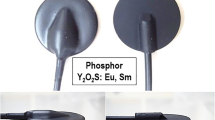Abstract
The FreeStyle Libre Pro® flash glucose monitoring system is easy to use in diabetes care. However, the influence of radiological examination on recorded data has not been reported. The sensor should be removed prior to examinations involving strong magnetic or electromagnetic radiation. In the present study, it was assumed that radiological examination was performed without removing the FreeStyle Libre Pro® sensor in certain unanticipated situations. We researched the integrity of data recorded by the FreeStyle Libre Pro® system following exposure to chest X-rays, computed tomography (CT), radiotherapy (RT), and magnetic resonance imaging (MRI). Fifty sensors were exposed to chest X-ray, CT, RT, and MRI (1.5-T and 3.0-T), and the recorded data were compared with those obtained before the tests. Ten sensors were included in each group. There were no unread data or errors when the sensors were read. No change was observed before and after the examination for all tests.



Similar content being viewed by others
References
Distiller LA, Cranston I, Mazze R. First clinical experience with retrospective flash glucose monitoring (FGM) analysis in South Africa: characterizing glycemic control with ambulatory glucose profile. J Diabetes Sci Technol. 2016;10:1294–302.
Ólafsdóttir AF, Attvall S, Sandgren U, Dahlqvist S, Pivodic A, Skrtic S, Theodorsson E, Lind M. A clinical trial of the accuracy and treatment experience of the flash glucose monitor freestyle libre in adults with type 1 diabetes. Diabetes Technol Ther. 2017;19:164–72.
Ajjan RA. How can we realize the clinical benefits of continuous glucose monitoring? Diabetes Technol Ther. 2017;19:27–36.
Slattery D, Choudhary P. Clinical use of continuous glucose monitoring in adults with type 1 diabetes. Diabetes Technol Ther. 2017;19:55–61.
FreeStyle. Libre Pro flash glucose monitoring system: operator’s manual. Alameda (CA): Abbott Diabetes Care Inc.; Sep 23, 2016. http://www.accessdata.fda.gov/cdrh_docs/pdf15/P150021C.pdf. Accessed 15 Feb 2017.
Kanda Y. Investigation of the freely available easy-to-use software ‘EZR’ for medical statistics. Bone Marrow Transplant. 2013;48:452–8.
Ferrara T, Baiotto B, Malinverni G, Caria N, Garibaldi E, Barboni G, Stasi M, Gabriele P. Irradiation of pacemakers and cardio-defibrillators in patients submitted to radiotherapy: a clinical experience. Tumori. 2010;96:76–83.
Walton C, Gergely S, Economides AP. Platinum pacemaker electrodes: origins and effects of the electrode-tissue interface impedance. Pacing Clin Electrophysiol. 1987;10:87–99.
Sheibelhofer W, Glogar D, Probst P, Milczoch J, Kaindl F. Induction of ventricular tachycardia by pacemaker programming. Pacing Electrophysiol. 1982;5:587–92.
Naehle CP, Meyer C, Thomas D, Remerie S, Krautmacher C, Litt H, Luechinger R, Fimmers R, Schild H, Sommer T. Safety of brain 3-T MR imaging with transmit-receive head coil in patients with cardiac pacemakers: pilot prospective study with 51 examinations. Radiology. 2008;249:991–1001.
Nazarian S, Hansford R, Roguin A, Goldsher D, Zviman MM, Lardo AC, Caffo BS, Frick KD, Kraut MA, Kamel IR, Calkins H, Berger RD, Bluemke DA, Halperin HR. A prospective evaluation of a protocol for magnetic resonance imaging of patients with implanted cardiac devices. Ann Intern Med. 2011;155:415–24.
Hayes DL, Homes DR Jr, Gray JE. Effect of 1.5 T nuclear magnetic resonance imaging on implanted permanent pacemakers. J Am Coll Cardiol. 1987;10:782–6.
Fontaine JM, Mohamed FB, Gottlieb C, Callans DJ, Marchlinski FE. Rapid ventricular pacing in a patient undergoing magnetic resonance imaging. Pacing Clin Electrophysiol. 1998;21:1336–9.
Ministry of Health, Labor and Welfare Diabetes Homepage. https://www.mhlw.go.jp/www1/topics/kenko21_11/b7.html, Accessed 20 Nov 2018.
Acknowledgements
The authors would like to thank Dr. Seiji Muro, Mr. Atsuhiko Kimura, Mr. Akimasa Tanisaka, Mr. Hisayoshi Kaga, Mr. Yoshinori Hirose, and Mr. Mamoru Tamaki in Osaka Red Cross Hospital, and Professor Hiroyuki Muranaka in Faculty of Health Sciences Tsukuba International University for their valuable advice and technical support on measurements. This research received no specific grant from any funding agency in the public, commercial, or not-for-profit sectors.
Author information
Authors and Affiliations
Corresponding author
Ethics declarations
Conflict of interest
The authors declare that they have no conflict of interest.
Ethical approval
This study was approved by the Ethics Committee of Osaka Red Cross Hospital (Osaka, Japan). For this type of retrospective study, formal consent is not required. All procedures performed in studies were in accordance with the ethical standards of the Institutional Review Board.
Statement of human or animal right
This article does not contain any studies with human participants or animals performed by any of the authors.
Additional information
Publisher’s Note
Springer Nature remains neutral with regard to jurisdictional claims in published maps and institutional affiliations.
About this article
Cite this article
Takatsu, Y., Shiozaki, T., Miyati, T. et al. Are the recorded data of flash glucose monitoring systems influenced by radiological examinations?. Radiol Phys Technol 12, 224–229 (2019). https://doi.org/10.1007/s12194-019-00505-x
Received:
Revised:
Accepted:
Published:
Issue Date:
DOI: https://doi.org/10.1007/s12194-019-00505-x




